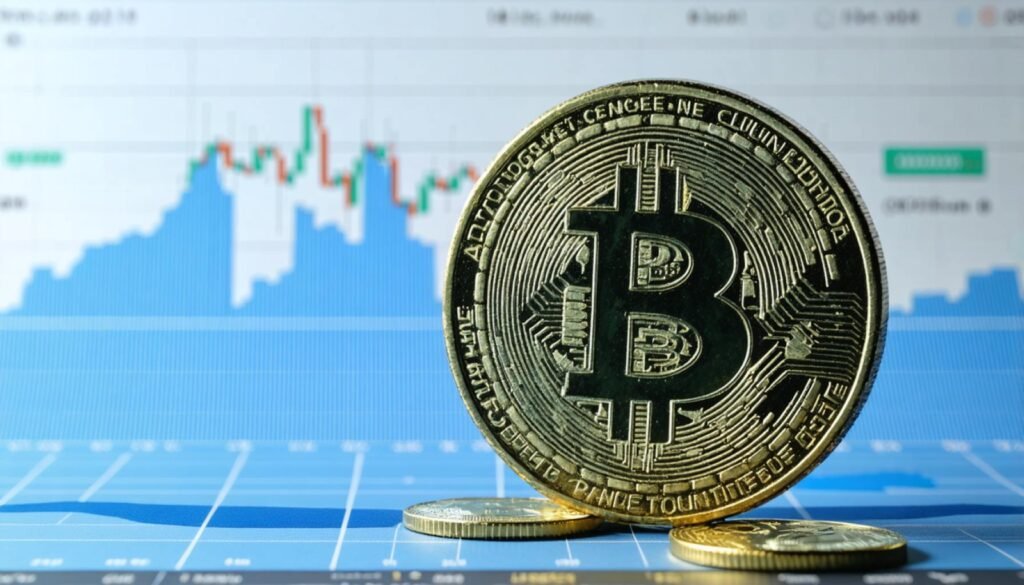Rising above $111,000, Bitcoin has broken past Bitcoin Surges records and attracted worldwide attention, increasing general interest in Crypto Markets. This historic rise reflects significant changes in institutional investment strategies, global economic conditions, and regulatory frameworks, rather than being solely a speculative frenzy as of May 2025. Anyone negotiating the changing digital asset scene must understand the main drivers behind this unheard-of Bitcoin price surge.
Institutional Adoption Signals Bitcoin’s Financial Mainstreaming
The tidal surge of institutional demand is among the most apparent indicators of Bitcoin’s maturing. The current bull run is fuelled by financial behemoth inflows, not retail speculators. As more companies consider including Bitcoin on their balance sheets, the asset becomes more respectable in conventional financial circles.

The participation of business titans like BlackRock, Fidelity, and Ark Invest has drastically changed Bitcoin’s investing profile. Products like the iShares Bitcoin Trust (IBIT) and ARK 21Shares Bitcoin ETF, now trading on big exchanges, provide institutional investors with a controlled and legal way to be exposed to Bitcoin. This has dramatically expanded the attraction of Bitcoin among pension funds, hedge funds, and even sovereign wealth funds.
Publicly traded software company MicroStrategy, well-known for its optimistic Bitcoin approach, has kept raising its holdings. Recent purchases of over $65 million worth of Bitcoin by the corporation support its status as a corporate bellwether for acceptance of the currency. As more companies think about including Bitcoin on their balance sheets, the asset keeps becoming more respectable in conventional financial circles.
Regulatory Clarity Boosts Bitcoin’s Institutional Appeal
The ever-better legislative environment in some important countries is another essential element driving Bitcoin’s price increase. In the United States, the Securities and Exchange Commission (SEC) has sought to give more organized control of the crypto industry. Early in 2025, the introduction of spot Bitcoin ETFs was historic and served to clear years of legal uncertainty over digital assets.
Legislative initiatives like the suggested “Genius Act” also seek to control stablecoins and enhance openness all around the crypto scene.
This shift toward regulatory clarity transcends the United States. Under the Markets in Crypto-Assets (MiCA) framework, which provides a consistent legal standard for crypto assets among EU member states, Europe is seeing these projects together help create a more reliable and trustworthy investing environment, therefore drawing more money into Bitcoin.
Bitcoin’s Appeal as a Hedge Amid Economic Uncertainty
The rising momentum of Bitcoin is much influenced by the larger economic background and driven by ongoing geopolitical conflicts, supply chain interruptions, and central banks’ accommodating monetary policies; global inflation is a continual worry. Investors are looking more and more to Bitcoin as a hedge against inflation and devaluation of fiat currencies as they deteriorate.
Unlike traditional assets, Bitcoin has a capped supply of 21 million coins, making it inherently deflationary. This fixed-supply model resonates strongly with investors seeking alternatives to government-issued money.
Bitcoin Price Surge Driven by Post-Halving Supply Shock
A “supply shock” is another factor fueling the price explosion. With the recent Bitcoin halving event in April 2024, the block reward dropped from 6.25 BTC to 3.125 BTC, effectively reducing the rate at which new bitcoins enter circulation. This decline in fresh supply and the increasing demand have generated a typical supply-demand imbalance.

Moreover, a significant share of Bitcoin is being retained by long-term holders and institutional cold wallets, further limiting the amount of BTC available for trading on public exchanges. This scarcity amplifies the price impact of even modest buying pressure, especially from large institutional players.
Bullish Outlook on Bitcoin Amid Long-Term Integration Trends
Investor sentiment is overwhelmingly bullish, with prominent analysts projecting continued gains. Some forecasts suggest that the Bitcoin market could hit $120,000 before the end of the second quarter, assuming that inflows into ETFs remain strong. Others, like Edward Carroll of MHC Digital Group, believe Bitcoin could reach $160,000 by late 2025 and even $1 million by 2030, contingent upon continued adoption and favorable macroeconomic conditions.
Optimistic with these optimistic forecasts, experts warn that Bitcoin is still a risky asset. Short-term price swings could be caused by market corrections, legislative disappointments, or abrupt macroeconomic indicator changes. Nonetheless, the long-term trend indicates that Bitcoin is progressively becoming included in the world financial system.
Final thoughts
In the larger story of digital finance, as much as in its own past, the climb of Bitcoin above $111,000 signifies a turning point. The convergence of institutional acceptance, legal clarity, inflationary pressures, and supply restrictions has created an ideal environment propelling Bitcoin into uncharted territories.
Although the crypto market is always going to be volatile, the basis of this surge is more solid than it has ever been. Once a peripheral asset ten years ago, Bitcoin is taking center stage in the modern investment portfolio.


